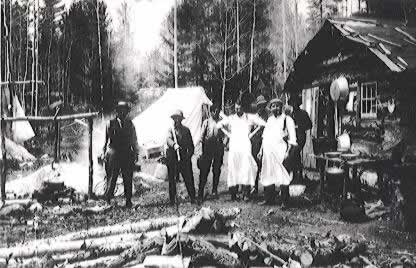This page updated July 31, 2005

The transport of logs from the forest to manufacturers consists of two distinct phases: skidding, or the movement of logs to a collecting site, and the transport of logs from the collecting site to lumber mills. Whereas skidding normally involves transporting logs relatively short distances, the movement of logs to the mill usually involves long distances and a variety of transportation means. Before the mechanization of American log transportation after the Civil War, whole logs were laboriously moved to the landing site via teams of oxen or horses or by floating them down streams and rivers. In the 1860s loggers began to cut trees into sawlogs in the forest and transport the smaller logs to the landing by sleigh. Experimentation led to the development of wider sleighs that accommodated the sawlogs more easily and transported them more efficiently. Increasing mechanization during the nineteenth century spurred the construction of railroads to carry logs from the landing to the mill.
This occupation wasn't always considered dangerous, but it could well be. Chances did exist that logs rolled in directions not intended by the men, consequently at times, men were trapped under them and crushed. It is possible that some of the men who also performed the log hauling task were men who simply listed their occupations as either haulers or saw mill workers. Teamsters or Drayman may also have transported logs. Listed below however are the men who specifically listed their occupation as Log Hauler.
Owen County
Alfred HUMBLE
William SUMERLOLL
Frank CUMMONS
Morgan County
John S. CARTER
William G. RIOU
Putnam County
Thomas ELLIS
Henry FORD
John RAGLIN
Milton CASSITY
Wm. M. HALL
Sarah GREGORY